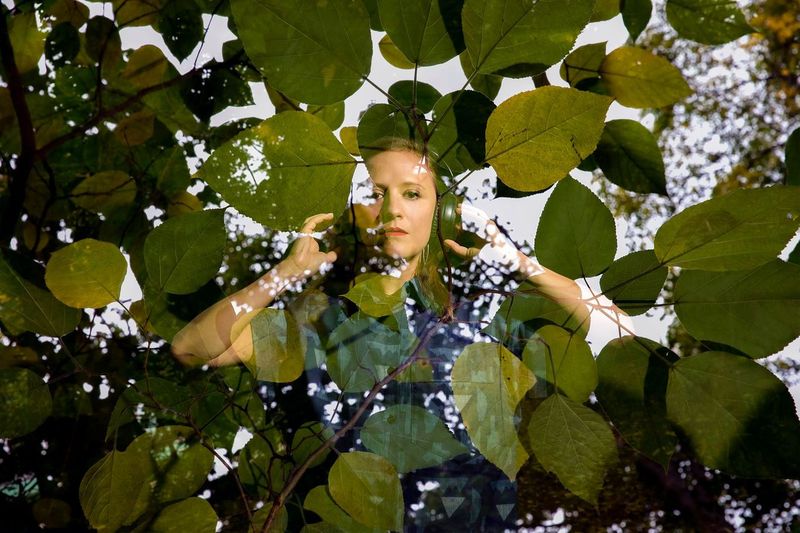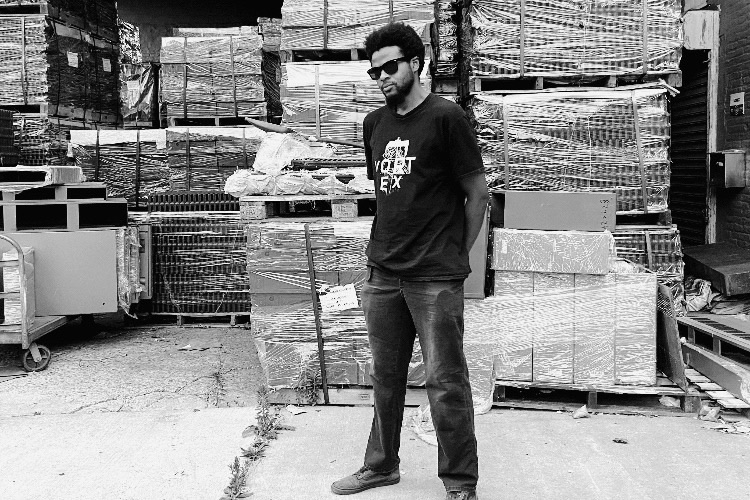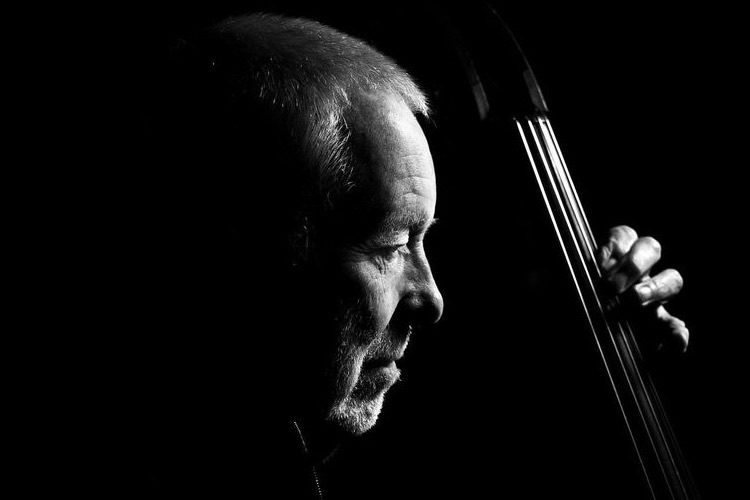Natural Sounds: A Conversation with Ellen Reid on ‘Big Majestic’
Nature has long inspired creative impulses. In music, an extensive line of composers – from Hildegard of Bingen’s ‘O viridissima virga’ to Oliver Messiaen’s explorations of bird calls – have looked to the environment to guide their work. But in an age where we are increasingly distanced from anything outside a screen-driven social media bubble, does the relevancy of nature remain? How can technology peacefully coexist with the environment? These are the issues at the crux of Ellen Reid’s Big Majestic (Amsterdam/ Eclipse, 2024).
Big Majestic is essentially the album outcropping of Reid’s public art experience, SOUNDWALK. With that project, listeners can control the progression of the music they hear based on their location within a public park – a space set aside to protect nature from the urban hustle and bustle. The composer has painstakingly crafted short pieces of music – cells – and attached them to areas of the park map. Which exact cell will play depends on the listener’s geolocation through GPS and the artist’s thoughts on the scenes from that location. It is a fascinating marrying of technology and nature done in a way that further augments the latter.
With Big Majestic, Reid takes some of these cells and forms an album. In principle, it would seem difficult to transition from outdoor scenery to a piece of vinyl or a digital file. Yet, even moving nature indoors has not caused it to wither. The magic and wonder of SOUNDWALK nevertheless remains. The album follows a linear narrative – something impossible in the GPS-led version – of a hike up and back down a mountain. But what truly stands out are the scenes captured along the way. You can feel the sun shining through leaves fluttering in a gentle breeze. You can see the rich blue skies cluttered with puffy white clouds.
And while Big Majestic uses nature as a center for life-affirming musical expression, like SOUNDWALK, it does not avoid finding ways for technology to be incorporated into that perspective. Often, Reid’s synthesizer takes on a key role across the album. In putting the synth on equal ground with the acoustic instruments of the Kronos Quartet, Shabaka Hutchings (including on what may be one of his last saxophone recordings), Riley Mulherkar, and others, the message becomes clear that it is possible to carefully marry development and preservation. What’s more, stylistically, the music emerges in a quasi-natural state that eschews the labeling of certain sounds. Hues of ambient peacefulness, jazz improvisational prowess, and symphonic richness blur into one. Big Majestic is a powerful work with an important message. But Reid – whose other work includes a Pulitzer Prize-winning opera on sexual assault – is a master at conveying the difficult yet imperative.
PostGenre: Going back, where did the idea for SOUNDWALK come from?
Ellen Reid: I love public parks and have a deep relationship with various parks near places where I’ve lived in New York and Los Angeles. One day, while running through Prospect Park, I reflected on how well I knew my running path and thought about all the people throughout time who had loved this path and had personal experiences with specific places in the park.That thought made me want to create a project that could hold space, move with the listener, and celebrate that. I knew it was possible to figure out something that could score a person’s walk and time in the park. And then, I set out to figure out how we would do so.
PG: You have done some work scoring films previously. Do you feel that experience – where you are making music to match the images you see – helps with a project like this which is so tied to where the listener is and what they are experiencing?
ER: Definitely. I think everything informs everything on some level. I think moving between concert work, film work, and other projects like sound installations, makes me flexible as a writer because the way people interact with my music in each context is so different. However, with a film score, you have way more control than you would in a SOUNDWALK, because usually people watch the film from beginning to end. In a SOUNDWALK, they might come in halfway through, go to the end, and then go to the beginning. The direction of the composition is left up to the listener, which is a different type of environment. So, while the experience of a SOUNDWALK might feel related to a film score, the compositional experience is completely different. Writing for a SOUNDWALK has much more in common with improvisation or incorporating chance into music as with those, there’s a big space left for the person’s experience.
PG: You presented a SOUNDWALK at the 2022 Big Ears Festival. Since each SOUNDWALK is so dependent on the listener’s individualized experiences with nature, was it a huge adjustment to make the work fit for an indoor performance at the Big Ears?
ER: Absolutely. It was a huge adjustment. The music of SOUNDWALK was created compositionally to never have a specific beginning, middle, or end. Depending on where you entered an installation, you would step into a different part of the composition. The music had to work like a sphere or something where no matter how you turned, it was complete. For something like a performance at the Big Ears Festival, there needs to be a beginning, middle, and end. It took a lot of crafting to take the themes and weave them into things that felt like concise songs.
One cool thing that happened at Big Ears though, is that was where the title track of Big Majestic was born. I initially wrote that music for a SOUNDWALK at Griffith Observatory in Los Angeles. I wanted something that matched the feeling of the architecture. So, I wrote the synth parts in a way that feels very spacey without other instruments. But because I had an incredible ensemble of brilliant players for the Big Ears Festival, I orchestrated an instrumental version for the first time using that theme and melody, and it became the first track on the album.
PG: When composing, do you typically start with the synth?
ER: Not at all. I typically start on the piano. I come up with some basic themes and ideas while sitting at the piano with whatever that inspiration is and try to tune the music to match it. Then I take it from there. I also use voice memos often. I find them super helpful. I record voice memos and then move those ideas either into a composition program or Logic.
One thing that was part of the compositional process for this music that was different from my other projects is that I would take the voice memos, put on headphones, and step outside. I went to different locations to sit with some music. Inevitably, when I did, the music always felt too tight. I had to slow it down, spread it out, and loosen it to go from my studio into the outdoors.
PG: When you are composing a SOUNDWALK, you are putting together different small pieces that you call cells. And then, as a listener walks a certain way, the app is programmed to change the progression of the cells they hear.
ER: That’s right. I have hundreds of cells.
PG: What is your process for determining the progression of cells?
ER: The process is multilayered. Part of this is because the SOUNDWALK public art installation responds to the listener and collaborates with the environment of a place. So, for example, in Griffith Park, there is a pretty arduous hour-long hike up to the top of this mountain, called Captain’s Roost. The musical journey for this hike has to accompany the listener up the mountain. And then, when they’re at the top of the mountain, the music needs to match both the expensive elation and the vertigo of being up there. The cells have to match and also be in conversation with the surroundings. They are layered together to move smoothly between the different sections so that if the listener decides not to go to the top of the mountain but instead make a left onto a trail, the music will go smoothly into…
PG: A different space.
ER: Exactly. Another kind of sound world. And making the music work in that way is a combination of composition and collaboration with the environment to heighten the sense of where the listener is.
PG: It seems improvisation may make the goal of matching the environment more difficult. How much freedom do you give the other musicians in creating these cells? In another interview, you mentioned how, for the song “Spiritual Sun,” you gave Shabaka space to produce what he called a “Forest of Shakuhachis.” Is that approach of giving your collaborators significant leeway common across Big Majestic?
ER: Well, there are various types of compositional techniques used throughout the album. For something like “Spiritual Sun,” it was more of a co-write with Shabaka. I came in with a bunch of stuff on synth as jumping-off points for Shabaka. Then, Shabaka came in. He was very inspired by his shakuhachis and laid them all out. He did these incredible takes of layering and improvising with himself over the synth part. It was so exciting to hear that track come together. Then, I took all the raw material and made it into what is now “Spiritual Sun.” By contrast, “West Coast Sky Forever,” is just a piece of sheet music that the Kronos Quartet brought to life through their incredible passion. Very different approaches between the two pieces. Everything else on the album is on a spectrum between those two. Because I am not only composing but also performing on the album, I can also tie the pieces together with my own improvisation on synth that makes some of the themes and variations on each track into a big composition.
PG: An indoor performance, as at Big Ears, is significantly different from an outdoor one for a project like this. But an album even further removes the music from its original setting as you ultimately have no control over the environment in which the listener experiences a recording. That said, what interested you in making your work with SOUNDWALK into an album?
ER: Totally. It’s a very different experience with an album. I can pinpoint my decision to make it into an album to a specific moment. I was with some friends on a road trip in Colorado. None of them had been able to attend a SOUNDWALK. One thing that was exciting to me about SOUNDWALK was how it was a free work of public art in public parks. It was very accessible to most people. But you still had to be in one of those parks, and they were unable to go to one. So, I played some music from SOUNDWALK on our trip. Watching how that music interacted with our surroundings and how happy my friends were to hear it made me think that maybe I should explore making an album so other people who can’t make it to a SOUNDWALK could also still hear the music.
But the challenge became how to make an album work since each SOUNDWALK is so tied to a specific location. My intent with the album was to make a journey as a fully composed piece that could then be split into tracks. I see the journey as climbing up a mountain on the first half of the album, ultimately reaching the summit with “West Coast Sky Forever.” You’re still at the top of that mountain for “Primrose Hill.” And then you start coming down the mountain for the second half of the album. Finally, you enter the jubilant city with “Mt. Lee and Step Lightly Now.” That was my inspiration and creating the album from that perspective was kind of like creating a SOUNDWALK.
PG: The music you pieced together for the album came from various SOUNDWALKs. Was it difficult going through all the SOUNDWALK recordings and determining what should be a part of the album?
ER: Yeah, I mean SOUNDWALK is hours and hours of music. Going through it was difficult and very tedious because everything is layers of music. There are only so many tracks for an album, but so many possibilities and different ways things could go. Picking one direction was very hard. So, was finding the right balance so that the album had an intensity that could hold a listener’s attention while maintaining the integrity of the music. It was all very challenging. But it was also interesting to get to know the music differently.
PG: As an alternative to an album, it might be technologically feasible to create an app that could use GPS anywhere in the world and determine things like the location of nearby trees or water or the elevation. Essentially, an app that would effectively bring the adaptive SOUNDWALK experience anywhere. Is that something that would interest you?
ER: Yeah, when we were initially putting this album together, we talked about something kind of like that. On certain maps, you can see natural features like trees and water. We thought about creating something that could be used all over the world, and that seems like a great idea on paper.
But I have to say that doing SOUNDWALKs in seventeen parks around the world makes me think about how much you would lose doing something like that because of the level of specificity for each SOUNDWALK I’ve done. I’ve been to each park in person, have gotten to know the park, read about its history, and watched people interact with it. Those things bring the music for each park to a new level. I don’t know how that could be done right now with technology. Every tree is different, and so is how you would capture them musically. There is a specific personal part of creating a SOUNDWALK that you would lose in using that approach.
PG: One thing that comes across in the album is the peacefulness and beauty of the music. Do you feel those aspects of the music may partly reflect self-soothing in response to having focused on the trauma of the sexual assault issues on your last major project, Ellen Reid: p.r.i.s.m (Decca, 2019)?
ER: I think everything is related on some level. But I see p.r.i.s.m. and SOUNDWALK as distinctly different. The SOUNDWALK pieces were written in collaboration with locations to evoke certain feelings. p.r.i.s.m. was written to go into very difficult subject matter. It also had to go into this whole spectrum that the libretto by Roxy Perkins so deftly carved out. They are related in that I made both of them. As a composer, I do see some commonalities between them. I think that, as an artist, writing each piece teaches you something. And both of those pieces taught me a lot. But I don’t see them as partner pieces.
PG: One of your teachers was George Lewis, who is himself an incredible composer as well. Do you feel his inspiration can be heard in a SOUNDWALK or in p.r.i.s.m.?
ER: George was one of my first musical mentors. He really opened my eyes to what music is and what it can be. And so I feel like on the cellular level, George is always there.
PG: OK. As a final question, in another interview, you indicated that you tucked away the Pulitzer Prize you received for p.r.i.s.m. in your studio.
ER: [laughing] Yup.
PG: You said that you are worried about showing it more prominently because it might make it difficult for you to create more freely. Do you generally find that recognition restrains your artistic voice?
ER: I mean, it’s such an honor and feels amazing to receive recognition and for people to appreciate your art. As an artist, I dream that what I make reaches and speaks to you. Something like the Pulitzer that affirms that is amazing.
But I think the nightmare of an artist is that you can only do something once. There is a point in the middle of the creative process for every piece where I can’t yet see the way to the end. Having something like the Pulitzer out makes me worry in those moments that I will never write anything good again.
I’m also aware that the opera I wrote that won the Pulitzer was very timely. I believe that part of its timeliness is why it won the award. I also think that, as artists, what we are interested in writing about will kind of cycle in the attention it receives. Sometimes, what we want to focus on will be in favor. Sometimes it will be out of favor. I think it’s important to just ride all those waves.
‘Big Majestic’ is out now on New Amsterdam Records/Eclipse Projects. It can be purchased on Bandcamp. More information on Ellen Reid can be found on her website.
Photo credit: Erin Baiano



